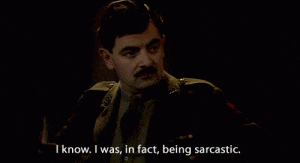Hi, remember me? It’s been a while since I last updated my little side project.
Why so long you ask? Well. Turns out, I would MUCH rather write all these wonderful English essays, and pedagogical reflections that university is making me do. Oh, what joy they bring me! 
So, what brings me back you ask? Well. I have quite a number of students who have dyslexia, and quite a number of students who are just learning how to read in English, and learn all of our wonderful pronunciation and spelling screw-up-ery. I mean, English is a mix-match of Latin, Greek, Germanic and French… plus you also have Shakespeare who bombarded the English language with a whole plethora of new words… spelling just couldn’t keep up.
To sum it up: I really FEEL for anyone who is an ELL (English language learner) and needs to read this damn language. I can only imagine the extra challenge for those who have dyslexia.
As teachers, we are expected to differentiate as much as possible within the classroom, and this brings about challenges as well. How do we help those who have dyslexia to read without increasing frustration? How do we develop a lifelong love for reading?
Here is one little exercise that you can try with your students – those who are beginning to read, as well as those with dyslexia. You can find a similar idea on this fantastic website Beating Dyslexia
First, teach them how to count syllables. One easy way is telling them to look at how many vowels each word has, but it is pretty amazing how quickly students catch on to the whole “clapping words out” idea.
Then, give the the little muffins a short reading passage. Something they can really sink their teeth into – a little difficult, but within their range of learning.
Lastly, tell them that they are going to read their part (alone or with a partner), and colour in words.
Green – 1 clap word, Yellow – 2 clap word, Red – 3 clap or more words
This makes them focus more on the word they are reading through saying it out loud and reflecting over it with a friend.
There we have it! Colour coding words. Try it with your students, and let me know how it goes.
Now. I will muster up all the energy (and wine) I have left, and write an essay on something really important for my pedagogical course.





Recent Comments